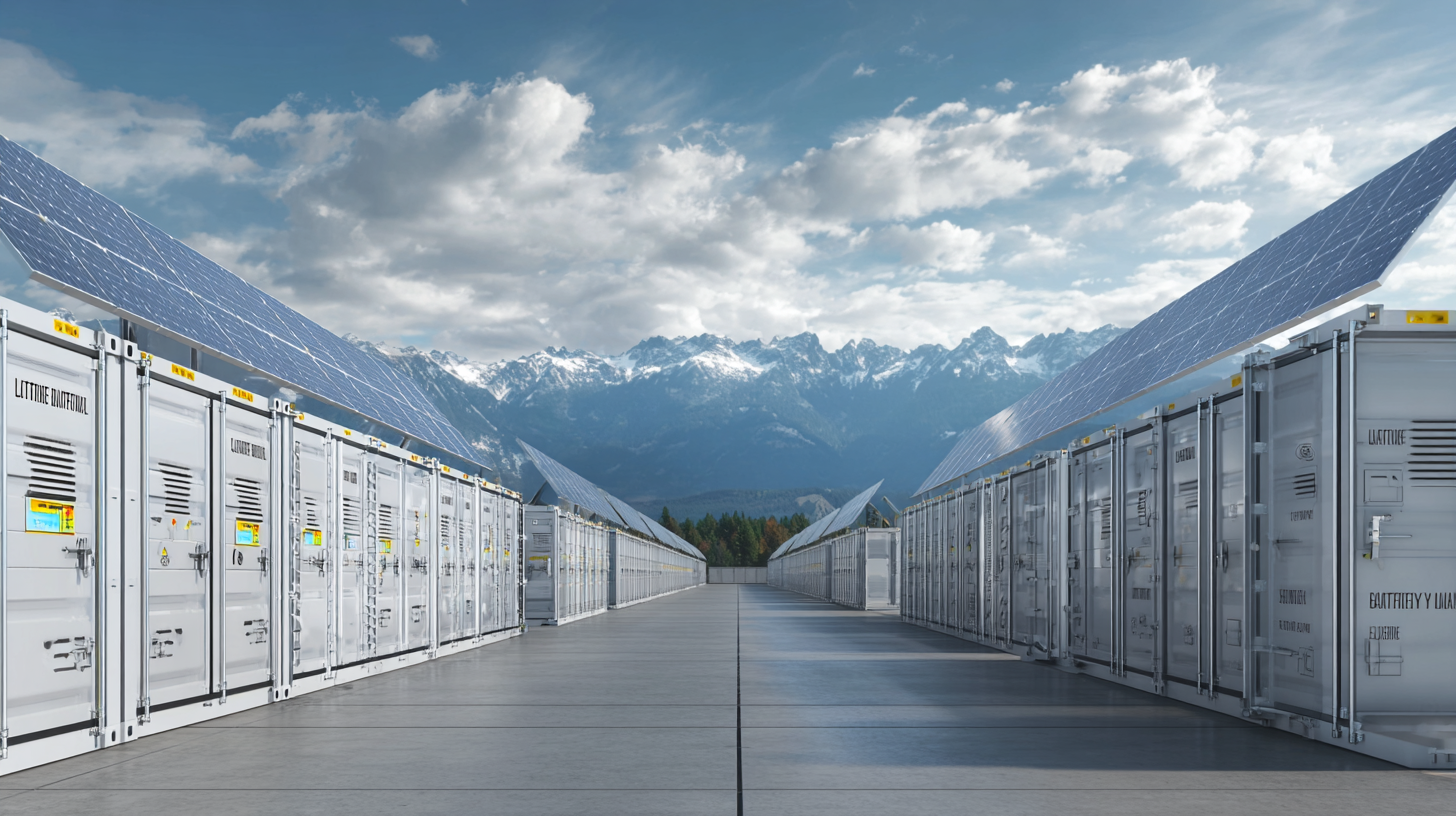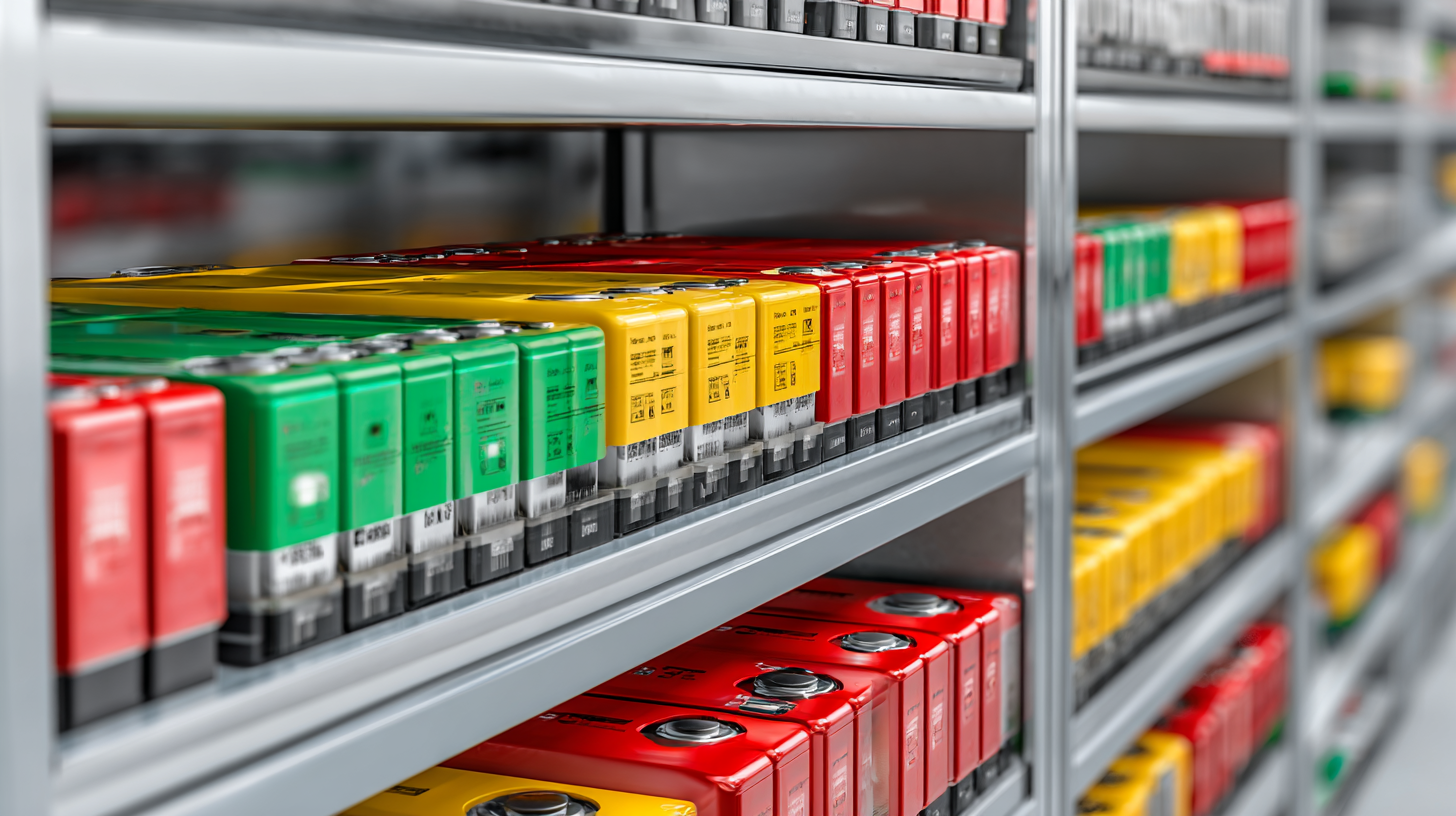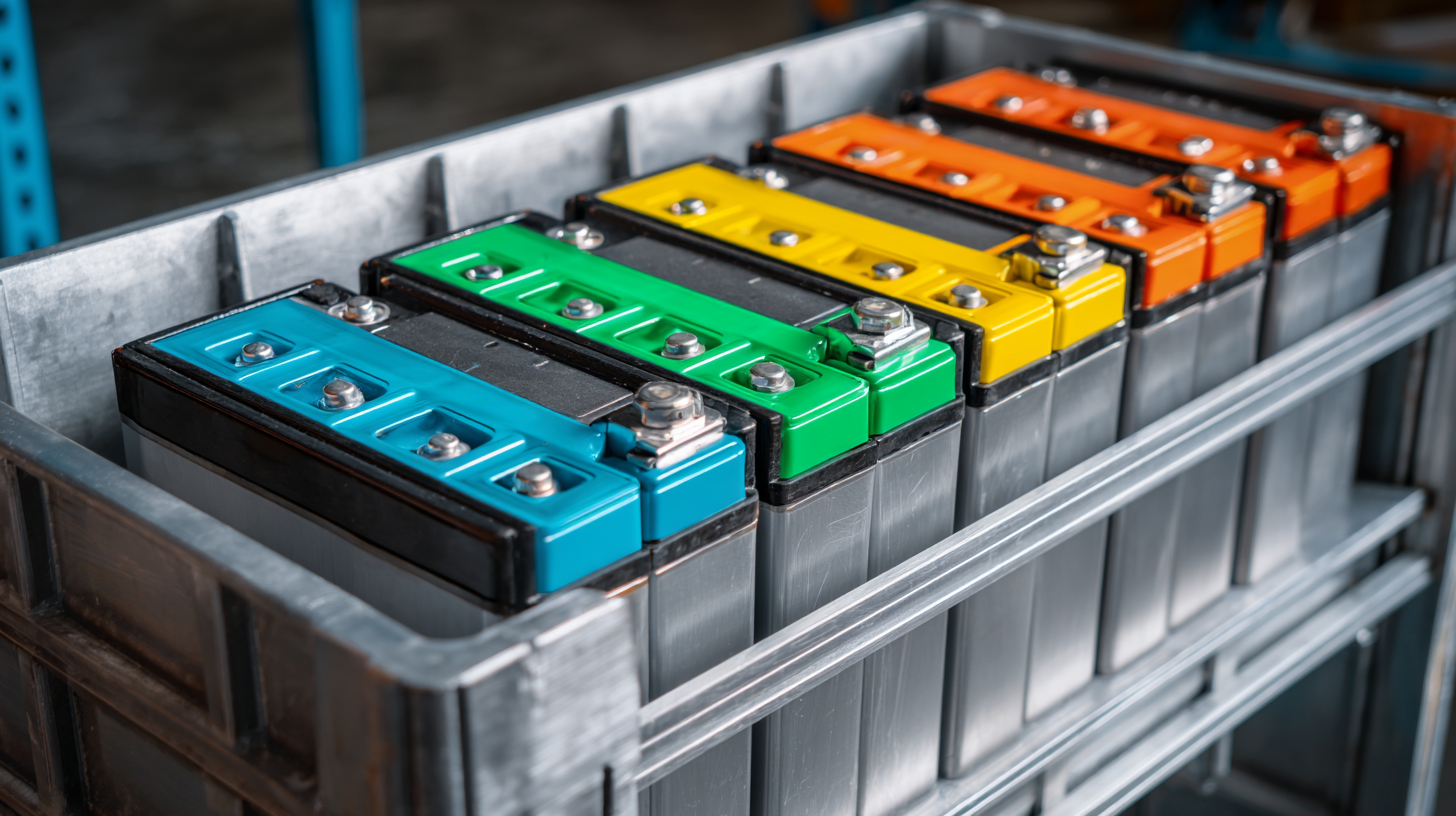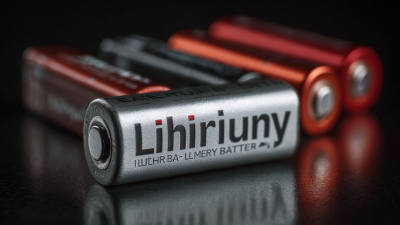Why Lithium Ion Phosphate Batteries Are Revolutionizing Renewable Energy Storage: Insights and Data
As the demand for renewable energy solutions continues to rise, the role of energy storage has become increasingly critical in achieving sustainability goals. Lithium Ion Phosphate Batteries (LFP) are at the forefront of this revolution, offering numerous advantages that enhance the efficiency of renewable energy systems. According to a report by the International Energy Agency (IEA), global battery storage capacity is expected to reach 350 GWh by 2025, with LFP batteries comprising a significant portion due to their long cycle life and thermal stability.

Additionally, a study by BloombergNEF highlighted that the cost of lithium-ion batteries, including LFP variants, has dropped approximately 89% since 2010, making them more accessible for large-scale applications. This transformation not only promotes the use of cleaner energy but also paves the way for innovations in both electric vehicles and grid energy storage, ultimately contributing to a more sustainable and resilient energy landscape.
The Mechanisms Behind Lithium Ion Phosphate Battery Technology
 Lithium iron phosphate (LiFePO4) batteries are becoming increasingly significant in renewable energy storage due to their unique mechanisms that enhance performance, safety, and longevity. One of the fascinating aspects of LiFePO4 technology is its ability to mitigate thermal runaway—a primary failure mechanism of lithium-ion batteries. Research has revealed intricate interactions at the microscopic level, where charge and discharge processes hinge on the properties of the interface between delithiated and lithiated materials. Understanding these microscopic mechanisms is critical in optimizing battery design and improving safety standards.
Lithium iron phosphate (LiFePO4) batteries are becoming increasingly significant in renewable energy storage due to their unique mechanisms that enhance performance, safety, and longevity. One of the fascinating aspects of LiFePO4 technology is its ability to mitigate thermal runaway—a primary failure mechanism of lithium-ion batteries. Research has revealed intricate interactions at the microscopic level, where charge and discharge processes hinge on the properties of the interface between delithiated and lithiated materials. Understanding these microscopic mechanisms is critical in optimizing battery design and improving safety standards.
Tip: When considering energy storage solutions, evaluate the longevity and thermal stability of the battery technologies involved. LiFePO4 batteries not only offer extended cycle life but also reduced risks associated with overheating.
Moreover, advancements in recycling strategies for spent lithium iron phosphate batteries are making strides in sustainability. Recent studies have emphasized the importance of process optimization, using techniques like medium-temperature roasting to enhance material recovery while minimizing environmental impact. Such approaches are crucial as the demand for efficient and sustainable energy solutions continues to grow.
Tip: Always prioritize battery recycling options to ensure a minimal ecological footprint. By supporting technologies that facilitate the recycling of lithium iron phosphate batteries, you contribute to a more sustainable future.
Advantages of Lithium Ion Phosphate Batteries in Energy Storage Applications
Lithium Iron Phosphate (LFP) batteries are emerging as a game-changer in renewable energy storage, thanks to their distinctive advantages. One of the primary benefits lies in their exceptional cycle performance and longevity, which makes them ideal for energy storage applications such as solar and wind energy systems. Recent studies underline their effectiveness, revealing that LFP batteries can achieve over 2000 cycles at 80% depth of discharge, substantially outpacing other battery chemistries. This longevity not only optimizes the lifecycle of energy storage systems but also reduces overall costs.
Moreover, the market for LFP battery recycling is projected to be worth $14.48 billion by 2035, with an astonishing growth rate of 69.45% CAGR. This surge is attributed to advancements in recycling technologies and the increasing demand for sustainable energy solutions. Efficient recycling processes promise to recover valuable materials, thereby minimizing waste and promoting a circular economy in the battery sector. The transition to LFP batteries, combined with effective recycling strategies, can significantly enhance the sustainability of renewable energy systems.
Why Lithium Ion Phosphate Batteries Are Revolutionizing Renewable Energy Storage: Insights and Data - Advantages of Lithium Ion Phosphate Batteries in Energy Storage Applications
| Feature | Lithium Ion Phosphate Batteries | Other Rechargeable Battery Types |
|---|---|---|
| Energy Density (Wh/kg) | 90-160 | 150-250 |
| Cycle Life (cycles) | 2,000-5,000 | 500-1,500 |
| Operating Temperature (°C) | -20 to 60 | -20 to 45 |
| Charge Time (hrs) | 1-4 | 2-8 |
| Safety Rating | High (Low risk of fire) | Moderate (Fire risk) |
| Cost ($/kWh) | 300-400 | 400-700 |
Comparative Analysis: Lithium Ion Phosphate vs. Other Battery Technologies
Lithium Iron Phosphate (LFP) batteries are gaining significant traction in the energy storage landscape, primarily due to their remarkable thermal stability and safety features. The global market for portable LFP batteries in the automotive sector is projected to grow from $12.7 billion in 2024 to $44.2 billion by 2034, with a compound annual growth rate (CAGR) of 12.7%. This surge is reflective of the increasing demand for reliable energy storage solutions in electric vehicles (EVs), positioning LFP batteries as a key player amidst various battery technologies.
As competition intensifies in the field of emerging battery technologies, companies are vying to innovate from sodium-ion batteries to solid-state options. Solid-state batteries are poised to offer enhanced energy density, safety, and lifespan compared to traditional liquid electrolyte lithium batteries. However, advancements in LFP technology suggest that it may bridge current market gaps without requiring consumers to wait for the ideal performance promised by solid-state solutions. Meanwhile, reports indicate that the global zirconium phosphate market is expected to reach approximately $2.822 million by 2025, highlighting the growing interest in phosphate-based materials across multiple applications.
Real-World Applications of Lithium Ion Phosphate in Renewable Energy Systems
Lithium Ion Phosphate (LiFePO4) batteries are increasingly being recognized for their crucial role in renewable energy systems. Their application in solar energy storage is particularly notable; according to a report by the International Renewable Energy Agency (IRENA), energy storage systems using lithium-ion batteries can significantly improve energy management, enhancing the capacity to store excess energy produced during peak solar hours. These batteries offer a cycle life of over 2,000 cycles, which is significantly higher than traditional lead-acid batteries, thus providing a more sustainable and economical solution for energy storage.
In wind energy applications, LiFePO4 batteries are also gaining traction. A study by Bloomberg New Energy Finance (BNEF) highlighted that these batteries are responsible for driving down the overall costs of energy storage in wind farms, making them competitive with fossil fuels. Their high thermal stability and safety profile are key advantages in these settings, as they can operate efficiently in varying environmental conditions without compromising performance. With the shift towards greener energy solutions, the ongoing adoption of Lithium Ion Phosphate technology is set to reshape how we approach energy storage and consumption in the coming years.
Global Installed Capacity of Lithium Iron Phosphate Batteries (2020-2023)
This bar chart illustrates the growth of global installed capacity of lithium iron phosphate (LiFePO4) batteries used in renewable energy systems from 2020 to 2023. The data indicates a significant increase as the demand for more efficient and sustainable energy storage solutions rises.
Future Trends and Innovations in Lithium Ion Phosphate Battery Development
The advancements in Lithium Iron Phosphate (LFP) battery technology are poised to significantly reshape the landscape of renewable energy storage. According to recent market analyses, the LFP battery recycling sector alone is projected to grow substantially, with expectations of reaching USD 74.2 million by 2025. This growth highlights the increasing recognition of LFP batteries not only for their efficiency and safety but also for their improved sustainability through recycling initiatives.

Moreover, as countries strive for energy independence and carbon neutrality, innovations in battery chemistries are emerging at a rapid pace. For instance, while traditional lithium-ion batteries have dominated, recent explorations into sodium-ion technologies represent a strategic pivot, especially in regions like Japan. This move underscores a broader industry trend toward diversifying energy storage solutions to fortify supply chain resilience.
As electric vehicle battery chemistry evolves, companies are also focusing on the scalability of new technologies, such as lithium manganese-rich cells and ultra-fast charging options. These developments indicate a promising future in which various battery technologies, particularly LFP, will play pivotal roles in advancing renewable energy goals.
Related Posts
-

7 Compelling Reasons to Choose Best Energy Storage Lifep04 Battery for Your Business Needs
-

Unlocking the Future: Advantages of the Best Energy Storage LiFePO4 Battery for Global Buyers
-

7 Reasons Why the Lithium Iron Phosphate Battery is the Best Choice for Your Energy Needs
-

5 Essential Tips for Maximizing Your Energy Storage Lifep04 Battery Performance
-

Why Lithium Ion Car Batteries Are Revolutionizing Electric Vehicles Today
-

Comparing the Best Lithium Polymer Batteries: Performance Metrics & Industry Insights
